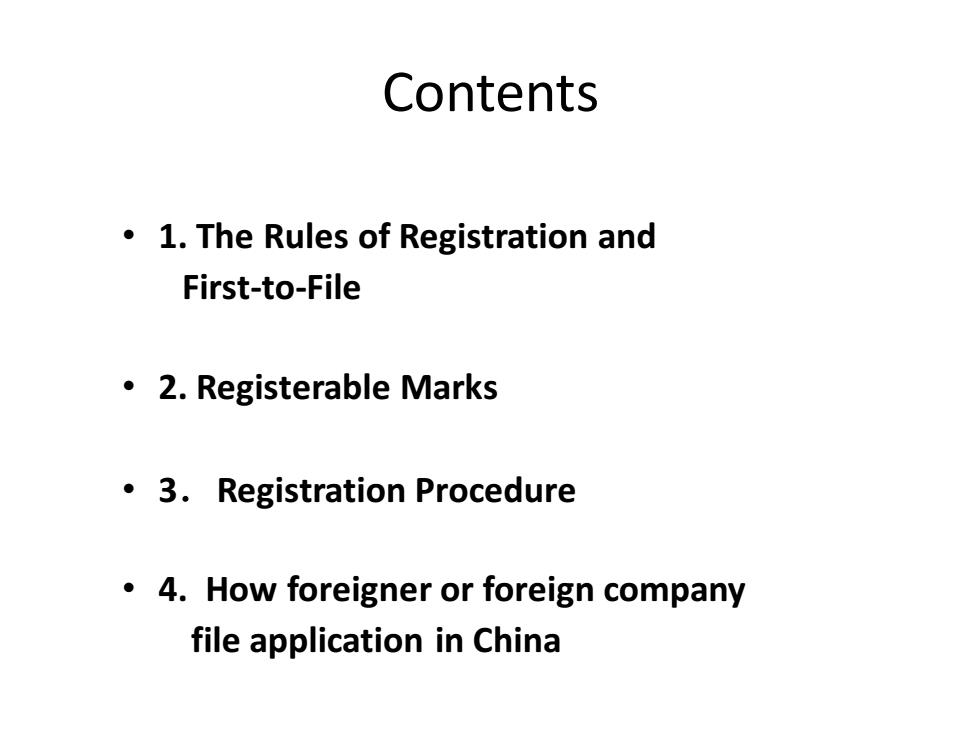
Contents 1.The Rules of Registration and First-to-File 2.Registerable Marks 3.Registration Procedure 4.How foreigner or foreign company file application in China
Contents • 1. The Rules of Registration and First-to-File • 2. Registerable Marks • 3.Registration Procedure • 4. How foreigner or foreign company file application in China
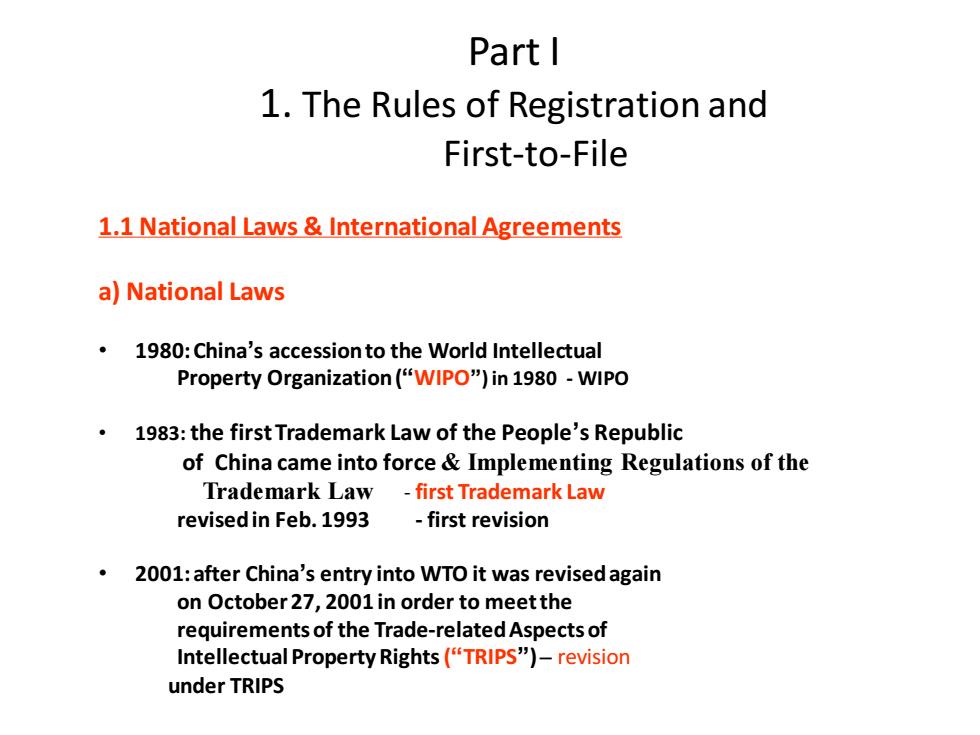
Part I 1.The Rules of Registration and First-to-File 1.1 National Laws International Agreements a)National Laws 1980:China's accession to the World Intellectual Property Organization ("WIPO")in 1980 -WIPO 1983:the first Trademark Law of the People's Republic of China came into force Implementing Regulations of the Trademark Law -first Trademark Law revised in Feb.1993 -first revision 2001:after China's entry into WTO it was revised again on October 27,2001in order to meet the requirements of the Trade-related Aspects of Intellectual Property Rights("TRIPS")-revision under TRIPS
Part I 1. The Rules of Registration and First-to-File 1.1 National Laws & International Agreements a) National Laws • 1980: China’s accession to the World Intellectual Property Organization (“WIPO”) in 1980 - WIPO • 1983: the first Trademark Law of the People’s Republic of China came into force & Implementing Regulations of the Trademark Law - first Trademark Law revised in Feb. 1993 - first revision • 2001: after China’s entry into WTO it was revised again on October 27, 2001 in order to meet the requirements of the Trade-related Aspects of Intellectual Property Rights (“TRIPS”)– revision under TRIPS
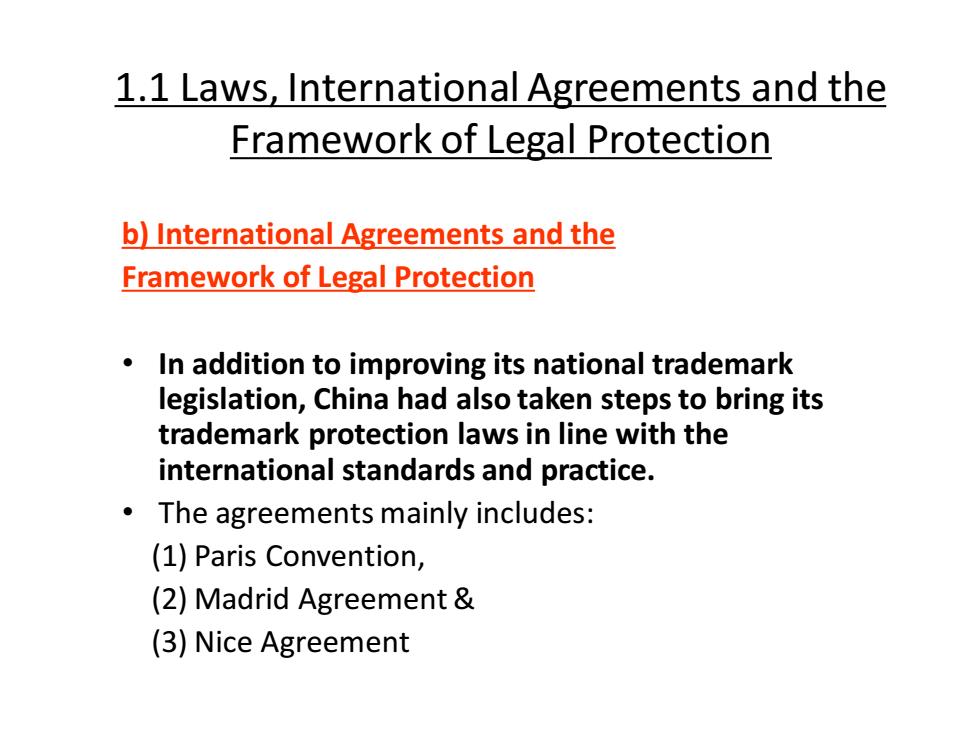
1.1 Laws,International Agreements and the Framework of Legal Protection b)International Agreements and the Framework of Legal Protection In addition to improving its national trademark legislation,China had also taken steps to bring its trademark protection laws in line with the international standards and practice. The agreements mainly includes: (1)Paris Convention, (2)Madrid Agreement (3)Nice Agreement
1.1 Laws, International Agreements and the Framework of Legal Protection b) International Agreements and the Framework of Legal Protection • In addition to improving its national trademark legislation, China had also taken steps to bring its trademark protection laws in line with the international standards and practice. • The agreements mainly includes: (1) Paris Convention, (2) Madrid Agreement & (3) Nice Agreement
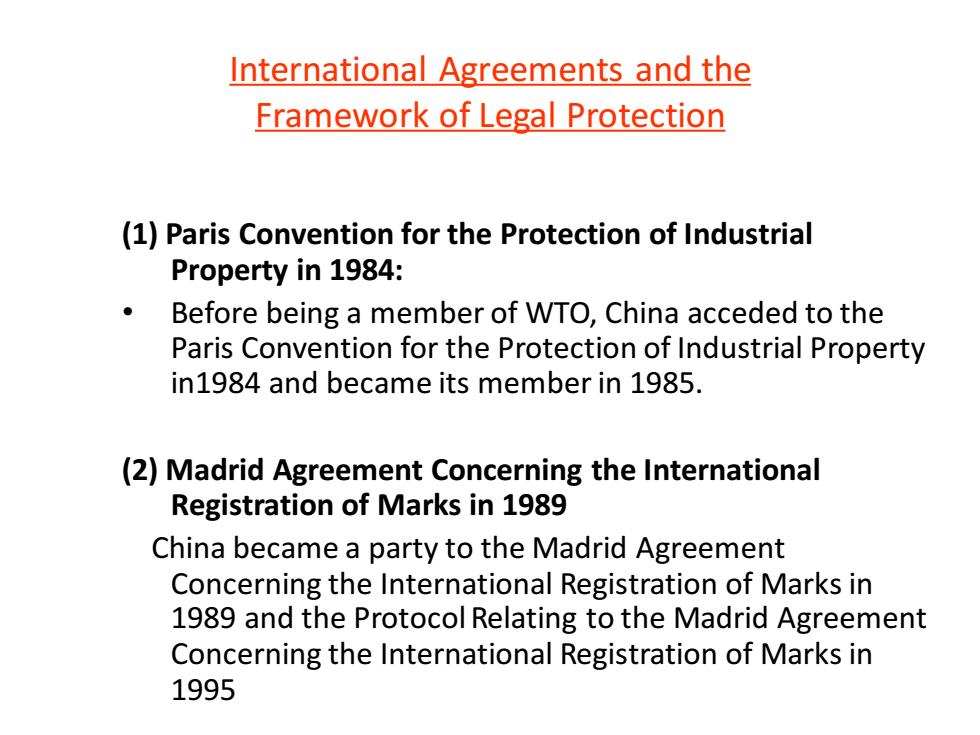
International Agreements and the Framework of Legal Protection (1)Paris Convention for the Protection of Industrial Property in 1984: Before being a member of WTO,China acceded to the Paris Convention for the Protection of Industrial Property in1984 and became its member in 1985. (2)Madrid Agreement Concerning the International Registration of Marks in 1989 China became a party to the Madrid Agreement Concerning the International Registration of Marks in 1989 and the Protocol Relating to the Madrid Agreement Concerning the International Registration of Marks in 1995
International Agreements and the Framework of Legal Protection (1) Paris Convention for the Protection of Industrial Property in 1984: • Before being a member of WTO, China acceded to the Paris Convention for the Protection of Industrial Property in1984 and became its member in 1985. (2) Madrid Agreement Concerning the International Registration of Marks in 1989 China became a party to the Madrid Agreement Concerning the International Registration of Marks in 1989 and the Protocol Relating to the Madrid Agreement Concerning the International Registration of Marks in 1995
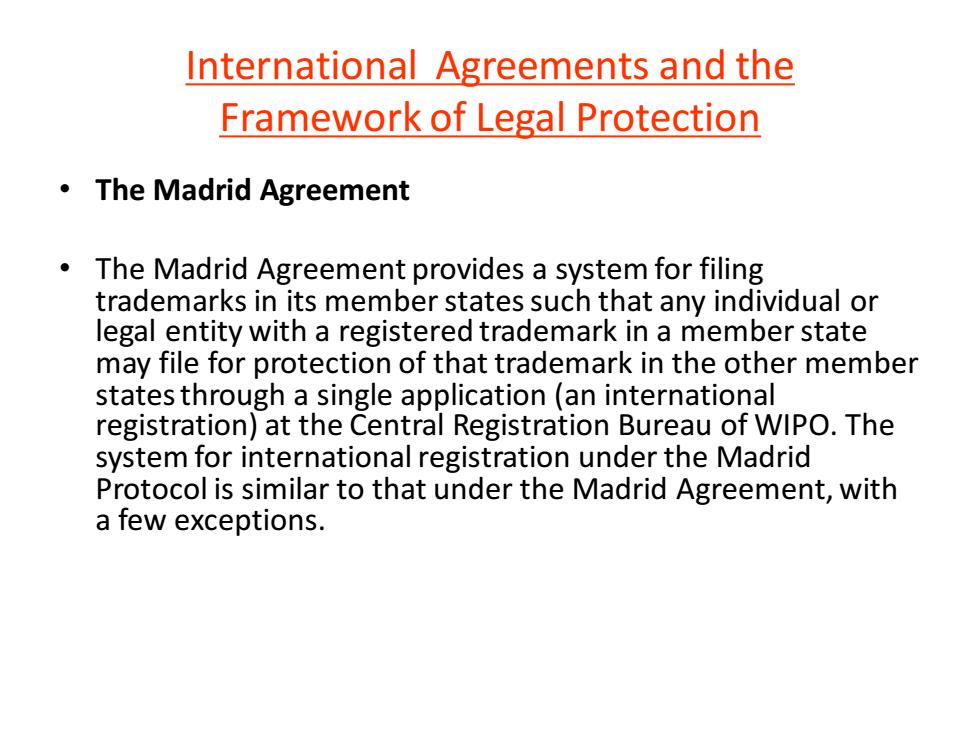
International Agreements and the Framework of Legal Protection ·The Madrid Agreement The Madrid Agreement provides a system for filing trademarks in its member states such that any individual or legal entity with a registered trademark in a member state may file for protection of that trademark in the other member states through a single application (an international registration)at the Central Registration Bureau of WIPO.The system for international registration under the Madrid Protocol is similar to that under the Madrid Agreement,with a few exceptions
International Agreements and the Framework of Legal Protection • The Madrid Agreement • The Madrid Agreement provides a system for filing trademarks in its member states such that any individual or legal entity with a registered trademark in a member state may file for protection of that trademark in the other member states through a single application (an international registration) at the Central Registration Bureau of WIPO. The system for international registration under the Madrid Protocol is similar to that under the Madrid Agreement, with a few exceptions